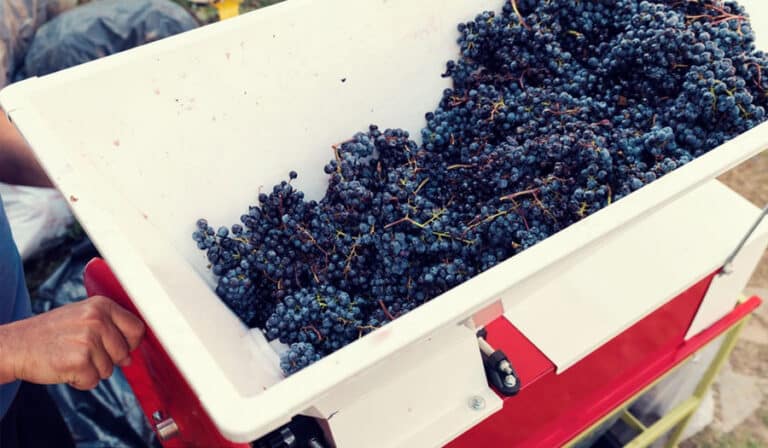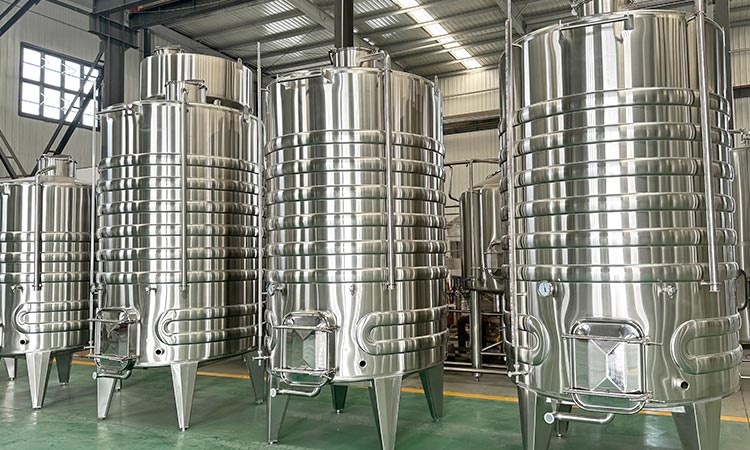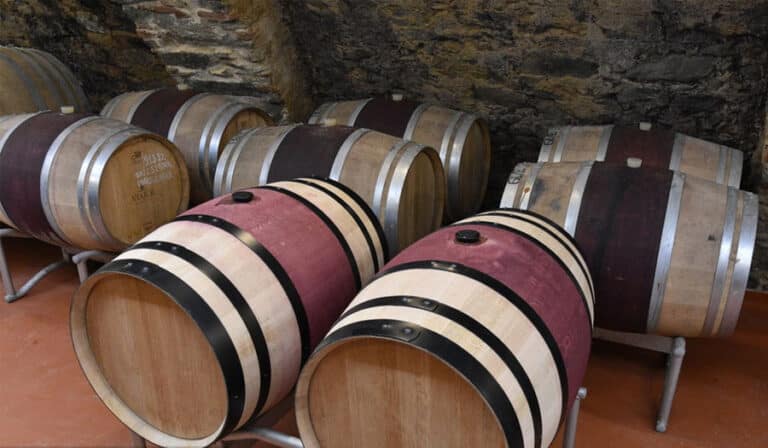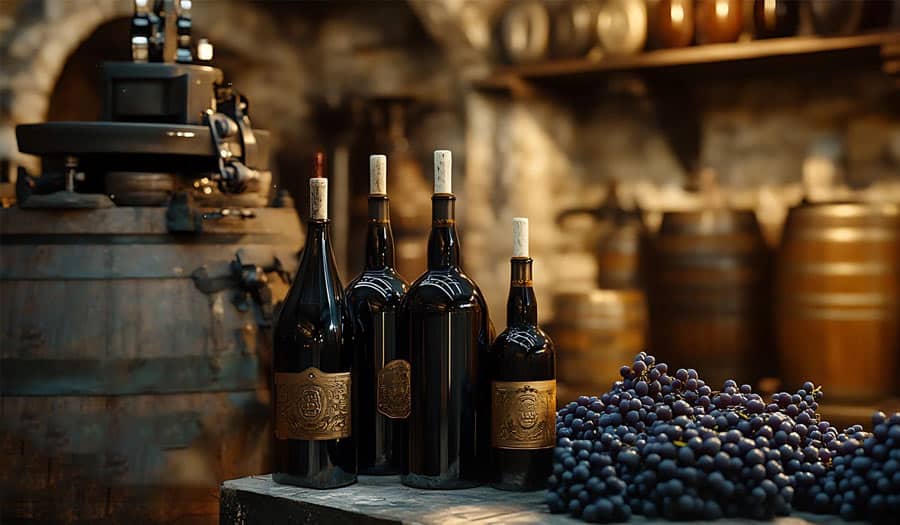Winemaking is a complex and delicate process that involves every step from grape picking to final bottling. To ensure the quality and flavor of each bottle of wine, these steps not only require the winemaker’s expertise and experience but also rely on advanced brewing equipment to ensure production efficiency and stability of wine quality. In this guide, we will introduce the basic winemaking process and the core equipment required in detail, help understand the technical requirements and equipment selection in commercial wine production, and provide practical reference for beginners entering the wine industry.
Commercial winemaking process
- Crushing and destemming: The first step in winemaking is crushing and destemming. This process separates the grape juice from the skin and stems, laying the foundation for fermentation. After picking, the grapes will be sent to the crushing equipment for crushing and destemming. This process is to release the juice of the grapes so that the winemaking process can proceed smoothly.
- Fermentation: After crushing and destemming, the grape juice will enter the fermentation tank for fermentation. The winemaker will control the fermentation temperature, humidity, yeast type, and other factors to ensure that the sugar in the grape juice is converted into alcohol and the required flavor substances are formed.
- Pressing and separation: After fermentation is completed, the wine needs to be separated from the wine by pressing equipment. This process is to obtain a purer wine, and the taste of the wine can also be affected by controlling the degree of pressing.
- Maturation: The maturation of wine is a crucial step. The maturation process will affect the color, aroma, and taste of the wine. At this stage, the wine will be stored in oak barrels, steel tanks, or other containers for a period of time, and stirring, filtering and other operations may be performed during the process.
- Bottling and packaging: After aging, the wine will enter the bottling stage, followed by labeling and packaging. The bottled wine may continue to be stored for a period of time to mature in the bottle.

Brewing equipment required for commercial wine
Grape crushing and destemming equipment
- Grape crusher: A crusher is a device used to crush grapes so that the juice of the grapes can be released and the fermentation process can begin. Most crushers use a drum design that can crush the grapes evenly.
- Destemmer: The function of the de-stemmer is to remove the stems (grape branches) from the grapefruit. Destemming helps to reduce the release of bitter substances and improve the quality of the wine. After destemming, the grapefruit will be sent to the crusher for further processing.
Wine fermentation equipment
- Roestvrijstalen fermentatietank: In modern winemaking, the use of stainless steel fermentation tanks has become mainstream. Stainless steel materials are corrosion-resistant, easy to clean, and high-temperature resistant, so they are widely used in wine fermentation. The capacity of the fermentation tank varies according to the production scale of the winery, usually ranging from dozens of liters on a small laboratory scale to thousands of liters in large wineries.
- Barrel fermentation: For the brewing of some high-end wines, especially red wines, barrel (especially oak barrel) fermentation is also a common practice. Barrels can not only provide trace amounts of oxygen to help the wine mature but also impart the aroma of the wine.
Persapparatuur
- Hydraulic press: Hydraulic press is a commonly used equipment in commercial winemaking. It can evenly press grapes through a hydraulic system to extract wine. Compared with traditional manual pressing, hydraulic press can improve efficiency and reduce the mixing of dregs.
- Centrifugal press: Centrifugal press uses the principle of rotation to separate wine and dregs through high-speed rotation. Although it is more efficient, the pressure generated by the centrifugal press is large, which may affect the flavor of the wine, so it is usually used for large-scale production.
Aging and storage equipment
- Roestvrijstalen tanks: Stainless steel tanks are usually used for the aging of white wine or red wine that needs to maintain a fresh taste. It does not give the wine a woody aroma like a wooden barrel but maintains the original flavor of the wine.
- Wine cellar storage: The wine cellar provides a stable temperature and humidity environment, which is an ideal place for long-term aging of wine. Modern wineries are usually equipped with high-tech temperature and humidity control systems to ensure that the wine is stored under optimal conditions.

Filtration and clarification equipment
During the aging process of wine, the wine may form precipitation or impurities, and these impurities need to be removed by filtration and clarification equipment.
- Plate filter: A plate filter is widely used for wine filtration, which can effectively remove suspended matter in the wine and ensure the clarity and transparency of the wine.
- Membrane filter: A membrane filter can filter the wine more finely and is suitable for wine that needs to be highly clear and pure.
Bottling and packaging equipment
Automatic bottling machine: Automatic bottling machines can improve the efficiency of bottling and ensure that each bottle of wine can be bottled under the best conditions. It can automatically complete a series of tasks such as filling, sealing, and sealing.
- Bottle corking machine: Bottle corking machine is used to accurately put bottle corks into wine bottles. Bottle corks are an important factor in maintaining the quality of wine, especially for wines that need to be aged for a long time.
- Labeling and packaging equipment: After the wine is bottled, labeling and packaging are the last steps to ensure the appearance of the product. Modern labeling and packaging equipment can complete this link efficiently while ensuring the accuracy and neatness of the label.
How to choose the best commercial winemaking equipment?
Determine your needs
First, determine your needs. Think about the type of wine you plan to make and how much you will produce. This will help you determine the size of the equipment and storage solution you will need. Stainless steel wine tanks are one of the essential tools for any winemaker. These tanks are perfect for fermenting and storing wine and are available in a variety of sizes to accommodate different production volumes. Whether you are making wine for personal use or planning to become a commercial winemaker, taking the time to consider your needs will put you on the road to success.
Choose the right equipment
When choosing equipment, quality and durability are crucial, as winemaking equipment is a long-term investment and improper maintenance may lead to production interruptions or compromised wine quality. High-quality winemaking equipment is usually made of materials such as stainless steel, food-grade plastic, or wood. Stainless steel is widely used in the winemaking process, such as in fermentation tanks, crushers, and other equipment, due to its corrosion resistance, easy cleaning, and non-reactive properties.
Choose the degree of automation
Modern winemaking is increasingly dependent on automation and intelligent equipment. Choosing the right level of automation will affect production efficiency, wine quality consistency, and cost control. The automated temperature control system ensures that the temperature in the fermentation tank remains in the optimal range to avoid the impact of temperature fluctuations on wine quality. Choosing equipment with precise temperature control can help improve the consistency and stability of wine.

Samenvatting
Commercial winemaking not only relies on the experience and skills of the winemaker but also relies on the support of modern equipment. From grape picking to final bottling, every step requires professional equipment to ensure the smooth progress of the brewing process. For wineries, choosing the right equipment can not only improve production efficiency but also ensure the consistency and stability of wine quality.
FAQ
How much influence does the selection of winemaking equipment have on the quality of wine?
The quality of wine is closely related to every link in the brewing process, and the choice of equipment has a direct impact on the quality. For example, fermentation tanks of different materials (such as stainless steel and wooden barrels) have different effects on the taste, flavor, and mouthfeel of wine.
Is fully automated brewing equipment suitable for small wineries?
For small wineries or boutique wineries, although automated equipment can improve efficiency, these wineries usually pay more attention to the personalized and refined control of the manual brewing process. Fully automated equipment may not be suitable for every link of small-scale production, because it may be too mechanized and not suitable for small-batch, high-quality production.
Is the maintenance cost of commercial winemaking equipment high?
The maintenance cost of the equipment depends on its frequency of use, material, technical complexity, and whether it needs regular maintenance. High-quality equipment usually has a long service life and low maintenance requirements. It is recommended to understand the maintenance requirements of the equipment and the warranty service provided by the manufacturer before purchasing the equipment, so as to better control the maintenance cost.
Do commercial wineries need to update their equipment regularly?
With technological advances and changes in market demand, it is inevitable for wineries to update their equipment. Regularly evaluating the performance, efficiency, and suitability of equipment can help wineries stay competitive. If the equipment is aging or the technology is backward, it may affect production efficiency or the quality of the wine.




